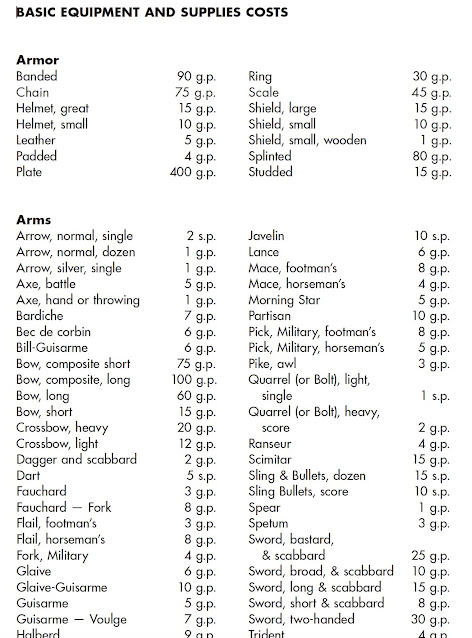Thinking about D&D economics (as one does), and I remembered a fact that doesn’t get mentioned enough. The economy of the game as it’s defined by the basic equipment tables is intentionally borked. And that’s before even thinking about expensive spell components and magic items, which are even more borked.
Consider if you will the humble longsword. For five editions now, a longsword has cost 15 gp. And most of the other items in the standard 5e equipment lists are still in the same general-cost ballpark as their AD&D equivalents.
The problem is that the AD&D pricing that every edition since then has run with is explicitly called out as unnaturally expensive. And no newer version of the game has ever really done anything about that. From the same AD&D “Players Handbook” equipment page as above:So D&D has always effectively had two economies — one for player characters, and one for everyone else. But unless you’re playing a game in the gold-rush-frontier milieu that A&D assumed was the default, there really isn’t any reason for that.
(Archive post from the personal blog.)



